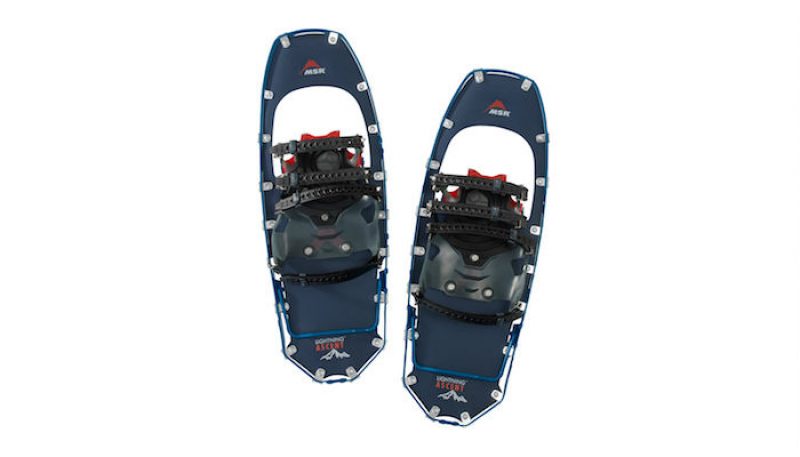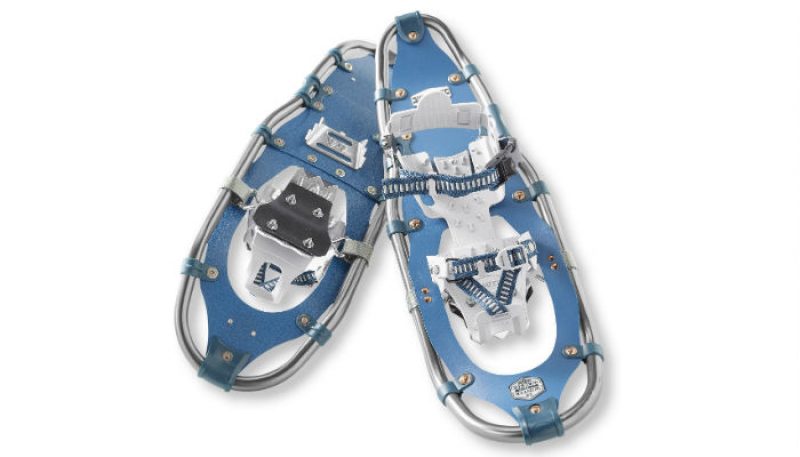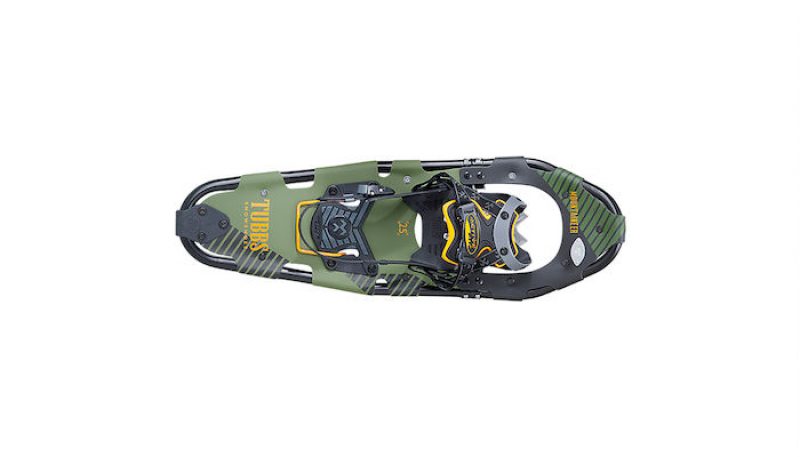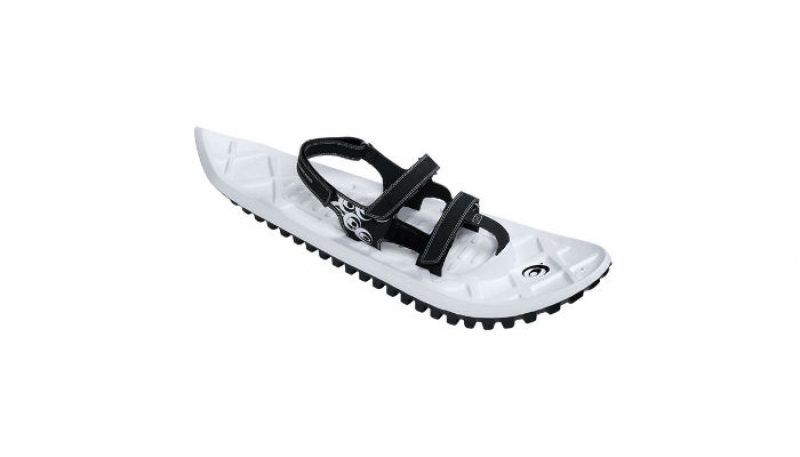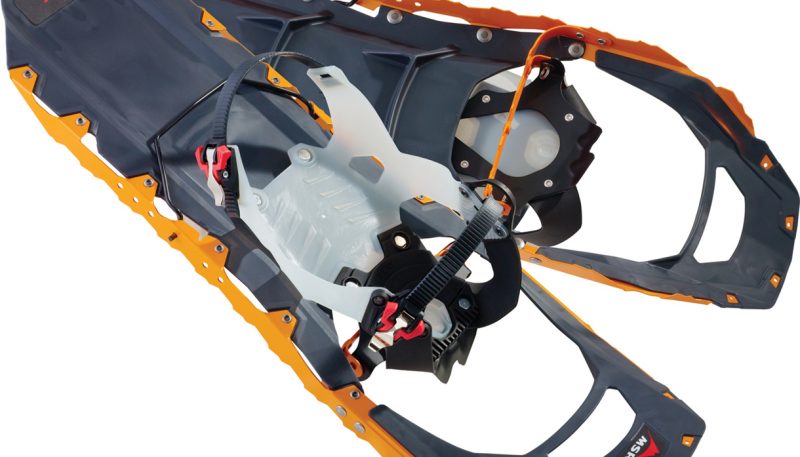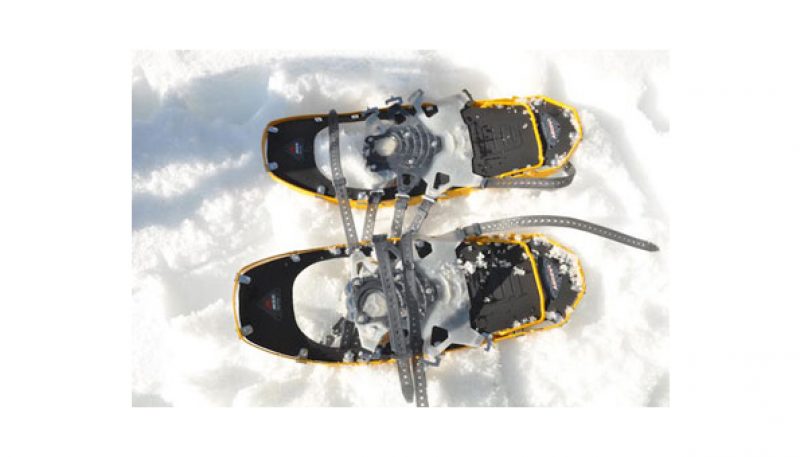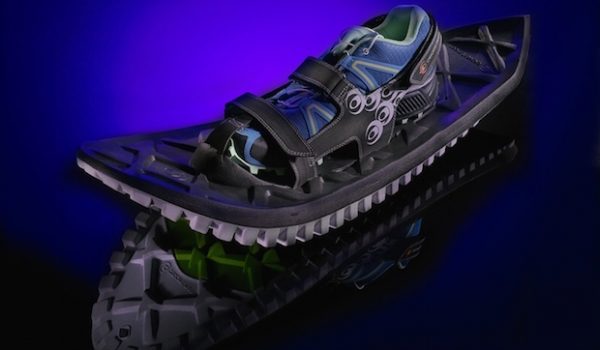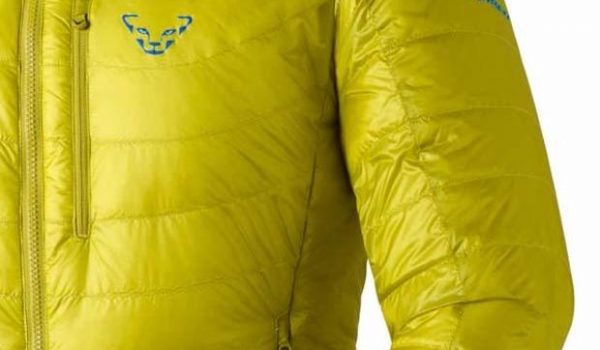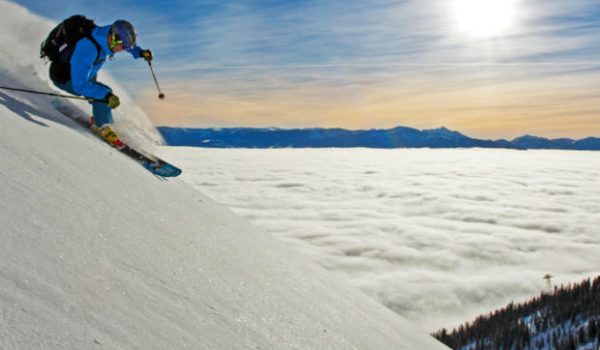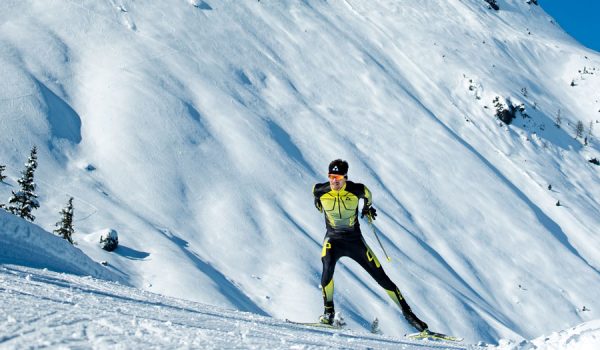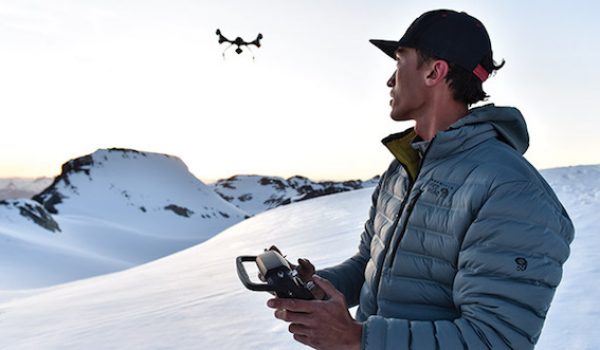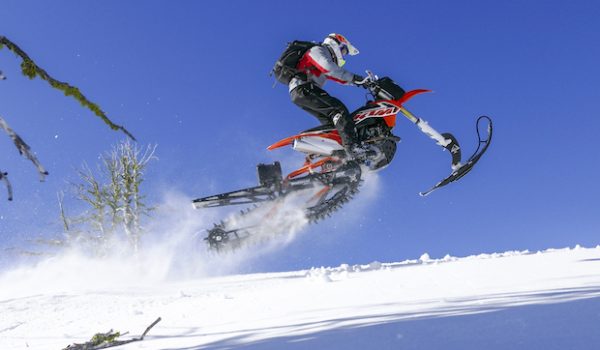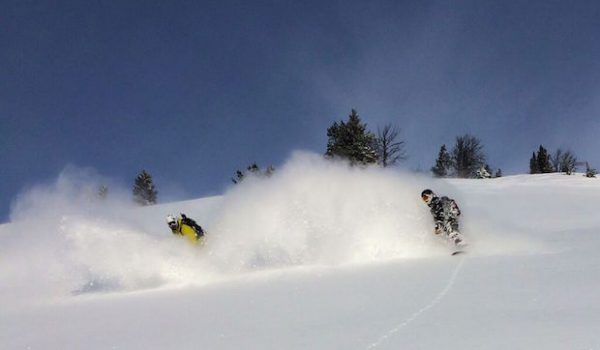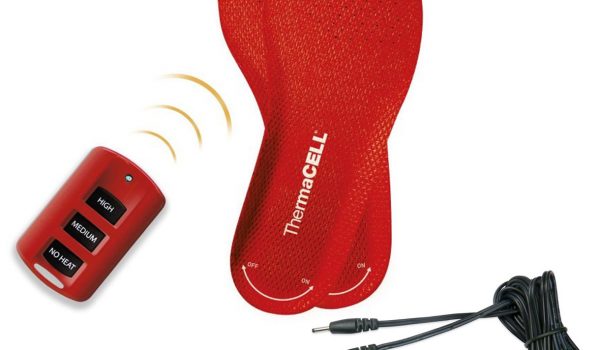Ease of Use
The first criterion in selecting snowshoes is determining whether you can use them in the rugged, winter conditions for which they are made. Will you be able to affix the bindings to your boots when it’s windy, snowing, and frigidly cold? Do you need to strip off your gloves, or can you stay safe and warm as you do-up the bindings? If you remove the bindings mid-outings, will you be able to step back into them in a deep field of powder?
The MSR Lightning Ascents proved to be masters of ease, both in the operation of the bindings in all possible conditions and the performance of secondary features like the heel lift bar for climbing assistance. The MSR bindings could be worked comfortably while wearing gloves, and the straps were immune to snow and ice accumulation.
Tubbs nearly equaled MSR’s ease of use performance – the bindings on the Mountaineers proved equally easy to use while wearing gloves, though the straps did at times accumulate small clumps of ice that slightly hindered operation in extreme conditions.
Crescent Moon also came close to the Lightning Ascent’s performance here, with the hook-and-loop closures on the binding straps being the easiest system to operate in clean, dry conditions. But snow and ice did build up at times, preventing those straps from locking in securely along their entire length.
Binding Support/Effectiveness
Ease of operation doesn’t also lead to peak performance, but in the case of MSR’s binding system, the two went hand-in-hand. The MSR Lightning Ascent bindings earned top marks for ease of use, as well as pure performance. The four-strap binding locked down securely, without pinching or constricting our feet. And regardless of the terrain we crossed –straight up steep wind-crusted slopes, straight down powder-covered fields, or across icy hillsides –the Lightning Ascents held our feet in perfect alignment on the snowshoes. No slipping and no discomfort. And that was true whether they were fitted to women’s size 8 dayhiking shoes or men’s size 13 snowboarding boots.
The Tubbs Mountaineers placed second in this category. Like the MSRs, the Tubbs system held our feet securely in steep climbs and descents. It was only on the steepest traverses that any of our testers felt a bit of heel slippage, and then it was only the heaviest hikers with the biggest boots.
The rest of the field was essentially tied. All performed well above average in terms of binding performance, but none came close to matching the performance of the top two in this class.
Traversing, Ice, Technical Conditions
After evaluating binding design and performance, we look closely at the performance of the snowshoes on a variety of terrain. Virtually every modern snowshoe functions adequately on flat, contourless ground, so we put them all to the test on mountain slopes. We ran them up and down slopes, and most importantly, we hiked across a variety of hillsides, from gradual slopes, to steep mountain flanks. We sought out crusty snow and icy conditions to really test the snowshoes’ traction devices.
MSR’s Lightning Ascents earned a perfect 10 in this category – with some testers trying to push that to 11 or 12! The Lightning Ascents boast the most aggressive traction system of any snowshoe we’ve seen and the snow-gripping hardware runs from tip to tail. In essence, the entire frame, and much of the bottom of the decking, is a traction device. Uphill, downhill, across near-cliff faces, the MSR snowshoe did not slip.
The L.L. Bean Winter Walkers –at less than half the price of the MSR shoes –came in a distant second in terms of traction and technical performance. The Winter Walkers sport a design that’s a bit dated but proven. The combination of modest cleats and crampons with an effective binding that held feet firmly in position on the shoes, had the Winter Walkers outscoring more technologically advanced shoes like the Tubbs, Crescent Moon and Atlas models. Those all scored about the same – well above average but just below the L.L. Beans (and far below the MSRs).
Natural Stride
The Crescent Moon EVA All-Foams shared top billing in striding comfort with the MSR Lightning Ascents and Atlas Spindrifts. All three brands allowed smooth, comfortable gaits that mimic the natural stride of an unencumbered hiker. Narrow decks and tapered tails help achieve this performance win for MSR and Atlas, while Crescent Moon couples those design elements with a deeply curved rocker shape to the snowshoe decks. This rocker actually helps lead the foot through a natural stride, almost forcing hikers to stay in normal step.
The Tubbs Mountaineer – behind the broadest of the snowshoes in the class – forced the widest stride, yet even that gait wasn’t uncomfortable. The L.L. Bean Winter Walker offered a comfortable middle ground in the walking motion review.
Powder Flotation
Finally, we examine the underlying rationale for wearing snowshoes in the first place: flotation on soft snow. All the shoes in this class provide flotation that’s more than adequate in all snow conditions, but when it comes to the dry, fluffy powder, the question comes down to not if you’ll sink, but by how much.
The Tubbs Mountaineers excelled at keeping us nearly the top of the powdery snowpack. The broad decks, and generously shaped frames maximized surface area to keep us high and dry on the snow. MSR, Atlas, and Crescent Moon provided better than average powder performance – only the fast-and-light Atlas Spindrifts sunk enough in powder to earn a mere average grade.
Review Conclusion
The snowshoes in this class represent the best of those offered for the 2017-2018 winter, and we worked them hard in testing to find where each excelled and where they came up a little short. Our pick for Best in Class was a hands-down favorite across the board for our test team: The MSR Lightning Ascents are all-mountain workhorses and performed as good, or better, than the rest of the competition in virtually every category.
That said, any of the shoes in this class are up to performing the tasks for which they were designed. Some, like the Atlas Spindrift, are best suited for fast-and-light adventures in the snow, while others, like the Crescent Moon EVA All-Foams, are design-made for novices and general recreational use.
To best use our findings, you should first identify your own needs. Decide where and when you’ll use them. That includes considering what type of snow you’ll trek on. Will you tromp through open meadows and generally flat, gentle terrain with the family? Do you plan to be more adventurous and trek up some mountain trails? Are overnight trips in the backcountry among your plans? The answers to these questions will help narrow your choices as you read through our reviews.
Test Methods
When evaluating performance of snowshoes, my team and I use our review models in a variety of snow and terrain conditions. We trek up and down steep trails and trudge across sharply angled slopes. We charge through deep powder (when we can find it!) and mince across icy fields. During the tests, we consider how the ‘shoes perform in each of these conditions and where they really excel so you can better match the snowshoes to your needs.
For this test, I performed much of the snowshoe testing work while researching routes for an update to my best-selling “Snowshoe Routes: Washington” guidebook (the inaugural work in the national series). I had the assistance of a team of snowshoeing enthusiasts, backcountry snowboarders, and wilderness rangers who joined me in testing these products. We trekked throughout the Cascade and Olympic Mountains of Washington, explored the steep peaks of the Teton Range in both Idaho and Wyoming, and rambled through the snow-laden highland steppes of central Washington and Oregon.
What Are Snowshoes?
Snowshoes are the earliest known means of making travel on snow easier. The best archeological evidence suggests these early “foot extenders” originated in central Asia about 4000 bc. Further evidence shows that without this mode of winter transportation, aboriginal people would not have been able to journey to what is now North America via the Bering Strait. Snowshoes are a natural for modern-day winter trekking, as more and more people are coming to realize. With a little planning and preparation, you can embrace the beauties of the backcountry year-round.
Hikers can enjoy great benefits when they supplement their warm-weather hiking with snowshoeing come winter. Snowshoes have been used by various cultures for eons, but only in the last 30 years have we seen modern innovations to ancient designs. The class wood and rawhide snowshoes have given way to advanced technologies. In evaluating snowshoes, we consider the three core components of modern snowshoes: the bindings, the decking and frame, and the traction devices. Our testing focuses on how these components best support the needs of the average winter enthusiast looking for a hiking-style adventure.
Identifying your needs
The first step in snowshoe selection requires some thought about where and when you’ll be using them. That includes considering what type of snow you’ll be trekking through. Will you be tromping through open meadows and generally flat, gentle terrain with the family? Do you plan to be more adventurous and trek up some mountain trails? Are overnight trips in the backcountry in your plans? The answers to these questions will help narrow your choices when it comes time to buy.
The size of your snowshoes depends on your weight—or rather, the combined weight of you and any pack you’ll be carrying—and the type of snow you’ll be cruising through. Generally, the heavier you are, the bigger your ‘shoes need to be. But, snowshoers in heavy, dense snow (such as what we usually find in the Cascades) need less flotation than snowshoes in light, fluffy Rocky Mountain powder. With that in mind, while snowshoe makers may recommend you use, say, a 30-inch snowshoe (refers to the length of the snowshoe), if you are only going to hitting the trails in the Cascades, you may be able to get by with a 24-inch snowshoe. On the other hand, if you plan to venture into other parts of the country where powder is common, if you plan to take an occasional over-night trip with a heavy pack, or if you will be out snowshoeing frequently, you might opt for the bigger ‘shoe. Again, the decision comes down to the answers to those opening questions: where, and how, will you be snowshoeing?
The answer to “where?” also needs to consider the specific terrain on which you’ll use your snowshoes. For steep mountaineering use, smaller snowshoes will give you traction and flotation without the burden of heavy, large shoes that can tire you on climbs.
On the other hand, long trails along flat terrain are best enjoyed when maximizing flotation. On flat trails, a larger — even though slightly heavier— snowshoe that stays atop the snow works best.
Understanding your snowshoes
After evaluating your planned uses and adventure locations, the next step is considering the snowshoes themselves. Modern snowshoes have three core design elements that define their performance in various snow and terrain conditions: frame and decking; bindings and traction devices. Before selecting new snowshoes, it’s important to understand the different characteristics of various bindings, decking styles, and traction systems. How these three components function in conjunction with each other will help determine the snowshoe’s suitability for your needs.
Frames & Decking
As you start sorting through the shelves of ‘shoes, the first consideration is the frame and decking. These comprise the bulk of the snowshoe. Frame and decking create the flotation that keeps you on (or near) the top of the snow. Traditionally, snowshoes featured wooden frames with rawhide woven decks. In the mid 1970s, a couple of brothers working at a Boeing decided to use their experience working with aircraft aluminum to create a better snowshoe for themselves and their friends. They launched Sherpa Snowshoes out of their Yakima, Washington, home with their innovative design: A tubular-aluminum snowshoe frame with a synthetic rubberized deck.
Today, tubular aluminum frames are the mainstay of snowshoe design but decking materials have continually evolved. Plastics, rubbers, and various synthetic fabrics have been used successfully. In the early 1990s, MSR introduced a radical design — their Denali Llama snowshoe was frameless model made from injection-molded plastic. In essence, the decking material was also the frame since it was rigid plastic.
Since that original Denali Llama design, MSR and other brands have refined the injection molding process, and found ways to vary the density of the plastic and even vinyl being molded to streamline weights and enhance performance.
An array of decking materials and designs exist today, but they all perform the same basic task: Providing flotation on snow. The differences will be in their weight, their effectiveness in providing flotation, and their durability and strength.
Some other factors that come into play on selecting frame and decking designs include the ability of the products to shed snow — if snow gathers on the decks and sticks to the frames, that increases the weight of each step you take. Noise is another potential consideration. Walking in a snow-laden landscape is generally a quiet activity, but some of the more rigid, plastic decks create a lot of noise as the bump and slide over crusty snow.
Bindings
The system of straps and buckles that affix the snowshoe to your foot is known as the binding. These vary widely in design and performance, as well as in fit. When heading out to buy snowshoes, you should take with you the boots, and socks, you will be wearing when snowshoeing. Generally, a good pair of mid- to high-top waterproof hiking boots is adequate for snowshoeing, though most seasoned snowshoers prefer an insulated winter hiking boots. As you try on test models, plan on taking your time—don’t schedule anything for at least a couple hours so you’ll have time to try on various snowshoes with your boots and see how they feel. This step in the process is vital since not every binding will work with every boot — large, heavily insulated boots and smaller shoes tend to have the biggest issues.
Binding designs vary greatly: Some use the Boa cable-and-spool tightening system — this essentially uses a ratcheting reel to pull a steel cable through a lace system, tightening the binding straps uniformly around your boot. Other systems utilize plastic or nylon straps and ratcheting buckles. Others sport simple but effective elastic bands that buckle in place.
Traction
After looking over the bindings on the top of the shoes, flip the snowshoes over and examine the bottom of the shoe. While the decking keeps you afloat in the snow, the cleats and traction bars on the bottom of the shoe keep you from slipping and sliding on ice and steep slopes. At a bare minimum, snowshoes should have a set of crampon teeth under your forefoot. Ideally, you’ll want at a row of ‘teeth jutting forward and another pointing backward. A set of cleats under the heel area is also vital. Sometime entry level snowshoes have only forefoot cleats. These work fine on golf courses and gentle slopes, but when you need to traverse or descend a steep slope, your find your heel slipping and sliding uncontrollably.
Many of the snowshoes featuring injection molded decks, or deck components, have multiple sets of cleats, while others have replaced the classic tubular aluminum frames with blade-style frames that provide 360º traction.
Bottom line, in snowshoes, slippage is a bad thing, so more traction is better.
Focus on Comfort
Like any footwear, one of—if not the—most important consideration is fit and comfort. The best shoe, boot, or snowshoe does you no good if it causes so much discomfort that you can’t wear it.
Fit and feel
As discussed above, bindings come in a variety of configurations and cinching devices. But regardless of the style, bindings have to do two basic things: keep your foot comfortably attached to your snowshoe and keep it pointed straight forward on the snowshoe. The first requirement seems simple enough, but the operative word is comfortably. The last you want to do on a frigid winter walk is to cut off the circulation into your foot. That means if the straps of the bindings can’t be cinched too tight of you’ll cut off blood flow into your foot. The bindings have to be designed to work when snug, but no more. This leads to the second imperative: keeping your foot pointing forward.
This is most important traversing a hillside. If you snowshoe is pointing forward across the hill, and your foot slips so your heel is pointing downhill, you are going to be out of balance and on unstable footing. You need your toes pointed toward the front of the snowshoe at all times. How do you figure out if a binding does thing? Try it out. When you go to buy, strap on the ‘shoes and stand sidewise on an incline board (the store should have one in the boot department, if not in the snowshoe department).
Ease of Use
Most binding systems today are designed to allow fast and easy adjustment. But a system that’s easy to adjust in a warm, dry store can be a bear to work with in the snow. When test fitting your bindings, you’ll want to try to fasten the bindings while wearing gloves—remember, you are going to be in cold, snowy conditions when you are using these things, so you should be able to adjust the bindings without exposing your fingers to the frigid air. Also, give some thought to how the bindings might be affected by snow and ice. Area there narrow metal buckles that could ice up? Levers or toggles that could be clogged by balls of snow? We look for those things during testing, and you should consider them as well when you are looking to buy.
Make sure the performance matches your needs
When evaluating performance of snowshoes, our lead tester and his team use them in a variety of snow and terrain conditions. We get out and trek up and down steep trails and trudge across sharply angled slopes. We charge through deep powder (when we can find it!) and mince across icy fields.
During the tests, we consider how the ‘shoes perform in each of these conditions and where they really excel so you can better match the snowshoes to your needs.
Price
While there is a good variety of prices in the snowshoe market, the different from most to least expensive isn’t as great as you’ll find in many gear categories. That helps make it easier to focus on the performance and technical aspects and less on price. That said, a difference of a $100 or more is significant, after all your other evaluations are tabulated, it does make sense to let price be a deciding factor in your selection among finalist.










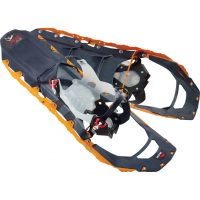
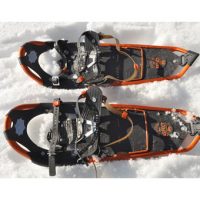
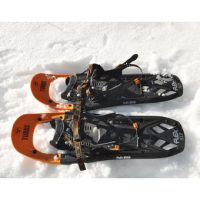

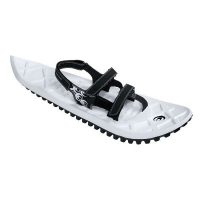
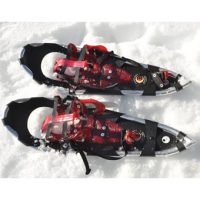
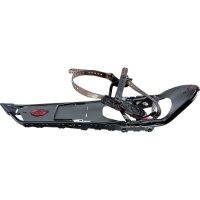
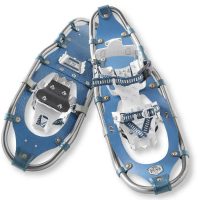
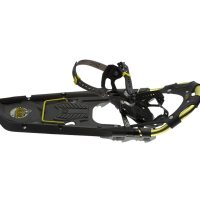
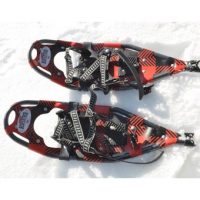
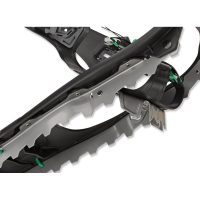
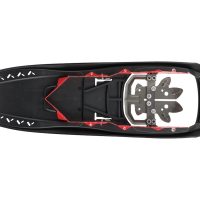
 96
96 